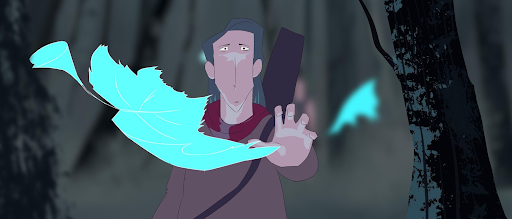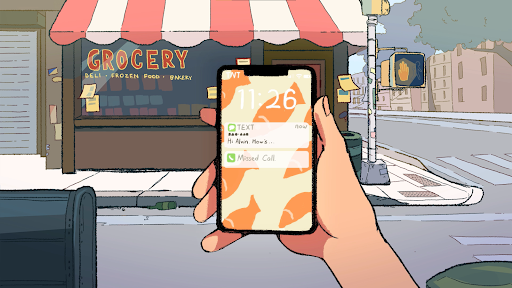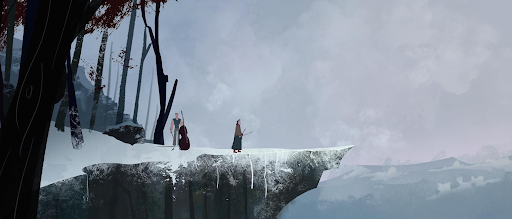Coloring Artist Helps Bring Award-Winning Animated Shorts to Life
Coloring artist Rosemary Wu brought emotional depth to the 2022 animated shorts What If Alvin and Fallen Leaves, earning international festival recognition for her vivid, story-driven color work.
Los Angeles, CA, 13th May 2025, Coloring artist Rosemary Wu helped bring two animated short films to life in 2022: What If Alvin and Fallen Leaves. Both films were created in Los Angeles and went on to earn recognition at international film festivals. Wu’s role? Helping shape the mood and emotion of each story—using color, frame by frame.

Film still from Fallen Leaves (Courtesy of the University of Southern California)
Color might not be the first thing viewers notice in animation, but it plays a powerful role. It sets the tone, guides emotion, and gives scenes their atmosphere. Wu used carefully chosen palettes to support the rhythm and feeling of each film, making sure every scene looked and felt just right.
With selections at festivals like Chaniartoon, New York Indie Short Awards, and the IMDb-qualifying Oniros Film Awards, both films gained attention for their style and storytelling. Wu’s work shows how color, often working quietly in the background, can make all the difference in how animated stories connect with their audience.
How What If Alvin Used Color to Keep Curiosity Alive
What If Alvin, directed by Yuyuan Chen, is a three-minute 2D animated short about a girl who keeps receiving texts and calls for someone named Alvin. Rather than brushing them off, she begins imagining who he might be. With each message, a new version of Alvin’s life unfolds, creating a series of whimsical, fast-moving scenes.

Film still from What If Alvin (Courtesy of the University of Southern California)
Rosemary Wu used distinct color palettes to differentiate each imagined scenario while maintaining visual continuity across the film. Her color work helped guide emotional tone—brighter palettes suggested humor and energy, while muted tones added mystery and depth—supporting the story’s dreamlike quality and character-driven charm.
What If Alvin received several recognitions:
- Official Selection, 6th Chaniartoon International Comic & Animation Festival
- Finalist, Best Animation, Oniros Film Awards
- Winner, Los Angeles Animation Festival
- Winner, Anim8 Student Film Festival
IMDb listing:
https://www.imdb.com/title/tt36909420/?ref_=fn_all_ttl_1
Creating Emotional Space in Fallen Leaves
The approach was entirely different in Fallen Leaves, an 8-minute short film directed by Thomas Edgar-McNerney, which follows two characters—Solah and Teedo—as they walk through a forest in late autumn. Their goal is to find someone from their past, but the film’s power lies in its mood and silence, not exposition. With minimal dialogue and only music to support the story, visuals carry the emotional weight.

Film still from Fallen Leaves (Courtesy of the University of Southern California)
In Fallen Leaves, color takes the lead in telling the story. Wu adjusted the palette in each scene to reflect shifts in time, space, and emotion. Warm tones highlight the protagonist’s memories of family connection, while cool, muted colors define the quiet and uncertain present. As Solah and Teedo journey through the forest, rich blues introduce a surreal atmosphere that hints at their shared past and the unresolved tension with their estranged sister.
By the end of the film, the colors shift again, this time from cool to warm, mirroring the emotional resolution between the siblings. That visual change, paired with the film’s music, gently underscores their growing understanding of each other. Wu’s use of color shaped the film’s emotional arc from beginning to end.
Fallen Leaves was recognized at several festivals:
- Finalist, New York Indie Shorts
- Official Selection, 6th Chaniartoon International Comic & Animation Festival
- Official Selection, Hollywood Shorts Fest
IMDb listing:
https://www.imdb.com/title/tt36381405/?ref_=nm_knf_t_4
Why Color Matters More Than People Think
In both films, color wasn’t a finishing touch—it was part of the storytelling structure. Coloring artists play a critical role in how animated films are received. Whether the goal is to energize a scene, slow the pacing, or highlight emotional shifts, color often makes the difference between what an audience sees and what they actually feel.
The role requires close collaboration with directors, background artists, and animators. Every frame must not only look polished but also serve the larger emotional arc of the film. When handled with intention, color becomes its own form of language, communicating things that characters may never say out loud.
A Final Thought on Storytelling Through Color
Working on What If Alvin and Fallen Leaves deepened Rosemary Wu’s understanding of how subtle choices like a shift in palette or the warmth of a shadow can carry emotional weight. These projects reinforced that color is not just an aesthetic layer, but a quiet, consistent force that shapes how a story is felt.
Wu continues to explore different forms of visual storytelling, including ways to merge traditional 2D techniques with computer graphics (CG) software such as Blender, Maya, and Unreal Engine, particularly in narratives rooted in memory, identity, and transformation.
Both What If Alvin and Fallen Leaves remain active on the festival circuit, with Fallen Leaves now available to view online. To see more of Rosemary Wu’s work or request screening materials, visit https://www.rosemarywu.com/.
About Rosemary Wu
Rosemary Wu is a coloring artist and animator focused on 2D and CG visual narratives. Her work has been featured in award-winning animated short films and recognized at international festivals for its emotional nuance and artistic cohesion.
Media Contact
Website: https://www.rosemarywu.com/

